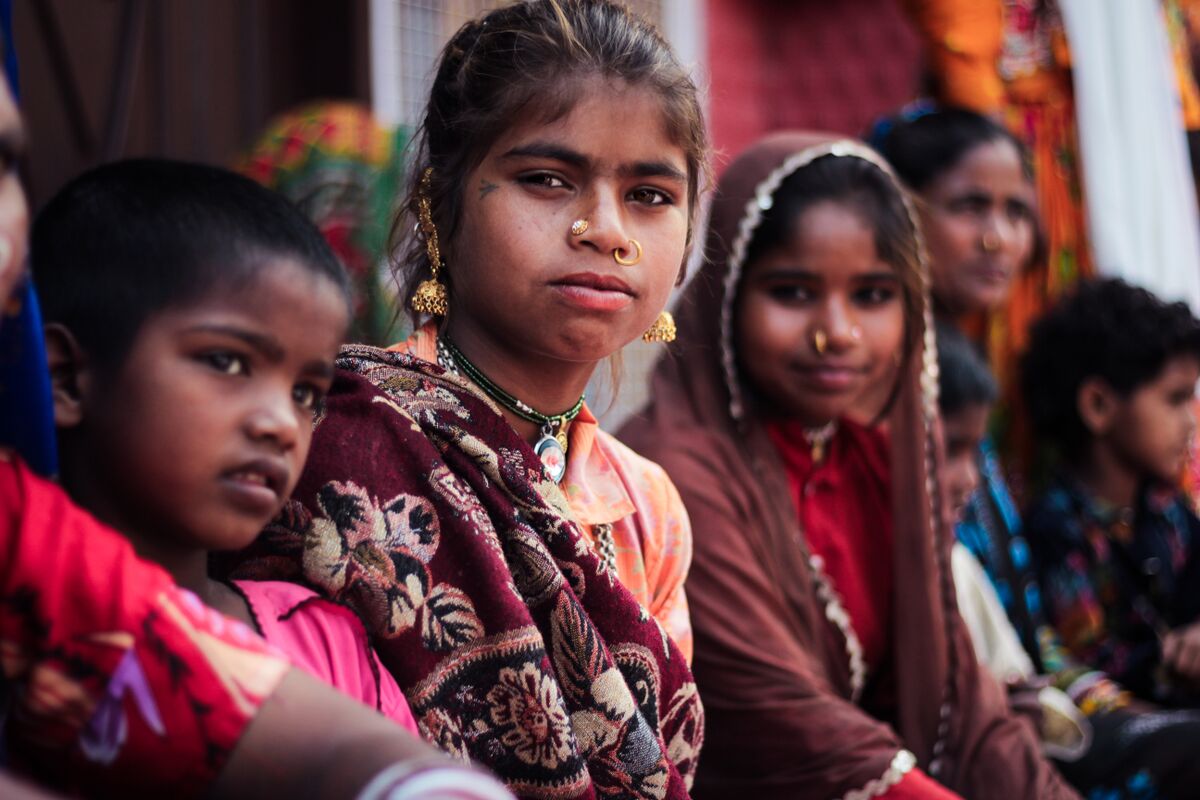- Austausch & Vernetzung
- Wissen & Lernen
- Advocacy
- Unsere Themen
Von Sathya Kalyania
As a middle school teacher, I have often seen very challenging situations for very young girls in my neighbouring Telugu language speaking communities like thottiya Naiker, Arunthathiyar and boyar. When a teenage girl cannot deliver a baby because it is too big for her pelvis and because she has no access to a doctor even after several days, the baby dies and the girl is left with a hole between her bladder, vagina and sometimes rectum. The result is that urine and sometimes faeces drip constantly down her legs. That is a consequence of child marriage.

The state of Tamilnadu in India, has one of the most severe crises of child marriage in the world today: with 32% of girls married by the age of 15 and about 48% married by the age of 18. Once married, a young girl is often separated from her family to become an added member of her husband’s family. Her movements may be restricted and her education ends. She may be subjected to sexual coercion and is expected to prove her fertility by bearing children. Having children before the age of 15 may result in obstetric fistula due to prolonged or obstructed labour, a serious medical condition in which a hole develops between the bladder, vagina, and sometimes rectum of a young girl, causing physical suffering, humiliation, and social ostracism.
My student “Thamarai Selvi” was forced to get married with her first husband “Murugan” at the age of 12 by her mother. But she refused the marriage and left her mother’shome and went to stay at her father’s home for better survival. Her father was very poor and decided to give his daughter to a new husband just for food and shelter. HEALDS (Health and Education Alternative Development Studies) is a civil society organisation, who eventually gave Thamarai Selvi an accommodation, including education and food.

In the Telegu speaking Arunthathiyar community, girls are socialised to believe that marriage is a key milestone in their lives. Girls are expected to make marriage their central goal, and train to become good wives and daughters-in-law. They start to place subordinate their interests to those of their family, even if this means they drop out of school or must get married.
Moreover, as an interview respondent put it, “A 16-year-old married girl is a woman, and a 30-year-old unmarried woman is a girl.”
The media in India adds to the belief that love is a never ending fairy tale of sexual romance and many young adults themselves desire to be married early to find their legitimate space in society while they fulfil their most intimate desires. These desires are rooted in a patriarchal structure and reproduce heteronormative ideas about gender, family and sexuality, which needs to be included in the discourse around early and child marriage.
When parents are asked why they decide to marry their children off, they mention causes like “dowry,” “poverty” and “fear of sexual violence”. Even though these are real causes which influence their decision-making around marriage, these factors are not the root causes. The root causes are structural inequalities! Dowry and other similar explanations are ultimately symptoms of those deeper problems. These underlying structures are an interplay of patriarchy, class, caste, religion and sexuality, which lead to complex realities which influence decision-making.
We identified seven root causes of early and child marriage: the economics of marriage; sexuality; gender norms and masculinity; educational and institutional gaps; the centrality of marriage; risk, vulnerability and uncertainty; and age as an axis of power.
Early and child marriage creates a number of negative consequences for them and their families. The development sector currently focuses on two primary areas: on education, as girls are forced to drop out of school; and on the health of young girls with a special focus on early pregnancy.
These two areas are essential to address, but we cannot overlook other issues such as gender inequality and violence, mental health, sexuality, and livelihoods. Girls may face physical, mental, emotional and sexual violence when they protest against something in their marital homes or if they refuse to have sex with their husbands.

The intention of providing these statistics is not to trivialize the issue of child marriage in Tamilnadu state of India. Instead, they reveal a more complex problem: even though the age at marriage has increased, which can be argued as a positive development, it has not empowered these girls as we hoped for. Structural inequalities persist which is still the root cause for child marriage. Furthermore, these social and economic structures interact with the lives of adolescents and it will take generations to overcome these structures and to move out of poverty and old customs.
As a teacher I noticed that some girl students dropped out from my class without prior information. I decided to investigate why they dropped out of school and went to their home. When I asked their parents they explained that according to their community culture, attitude and traditional believes, the girl will get married as soon as the puberty starts and she will be living with her husband-to-be for food, shelter and protection.
When I try to rescue that girl child, parents and elders belonging to that community got angry with me and against my standpoint. I then started to find solutions for the issue of early child marriage and I came to know HEALDS an NGO working for prevention of child marriages and reintegration of victims in their own community. HEALDS is part of the networking of “Girls not Brides” and has a very strong NGOs network in Tamilnadu named as “Campaign For Ending Girl Child Marriages in Tamilnadu”. With the help of HEALDS we conducted awareness campaigns at government schools and communities in Namakkal district. The fact that I prevented many girls from forced marriages in my school inspires me to write this article.